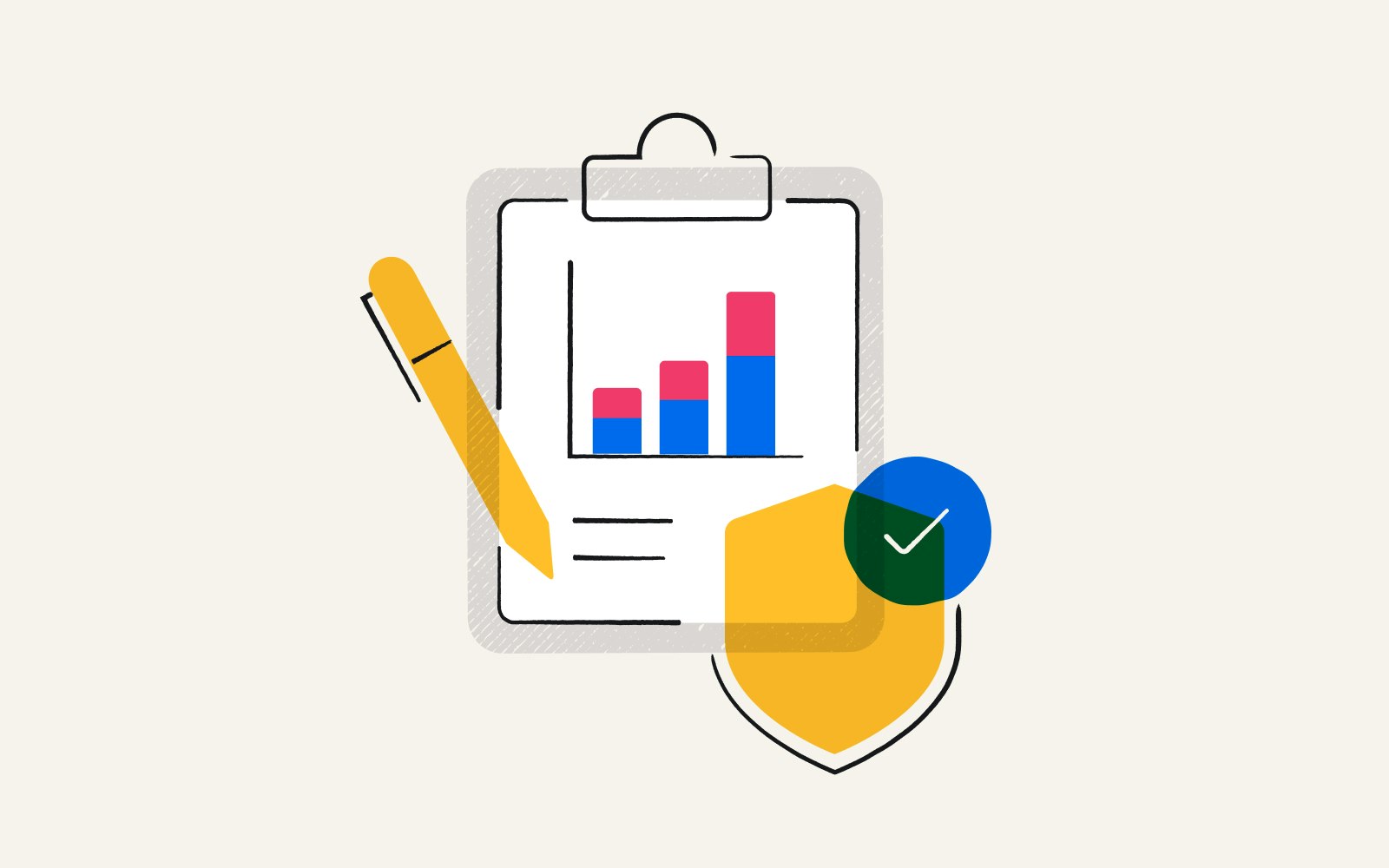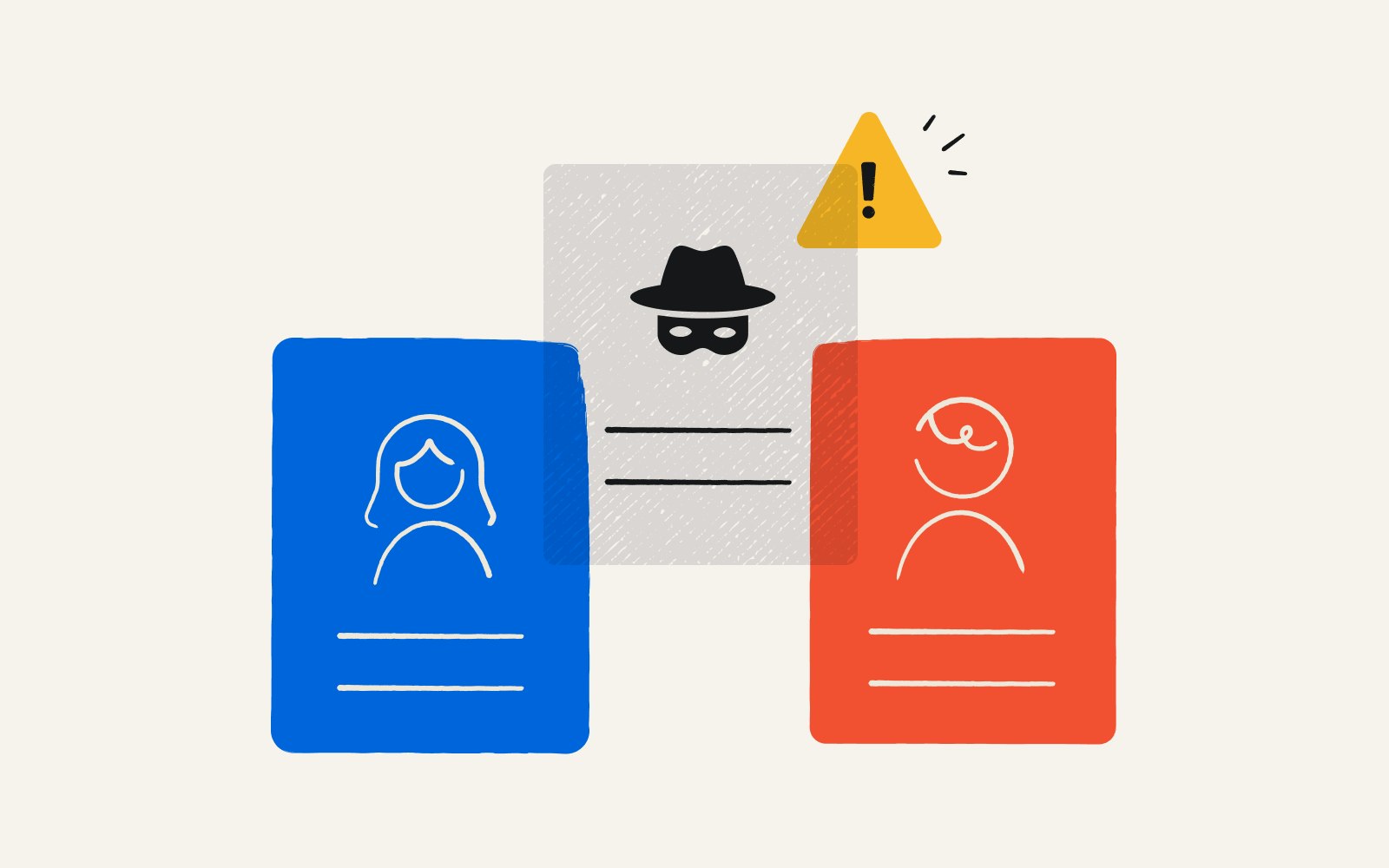Fraudsters cost the market research industry an estimated $350 million in 2024 — about 10% of total incentive spend across the industry. But fraud isn’t just a financial problem for research firms. Junk survey responses can compromise study findings, adding noise to legitimate responses. In worst-case scenarios, fraudulent responses can cause lasting reputational damage that leads to lost business.
Some scammers deploy sophisticated methods like device farms with hundreds of phones to create multiple fake identities. Others use AI tools to generate plausible-sounding responses that can be hard to detect.
While sophisticated technology powers fraudulent research activity, it’s also part of the solution for market research firms looking to safeguard their studies.
So, what can market researchers do to combat fraud? In this article, we'll explore why it’s so important to keep fraud out of survey responses, common warning signs to watch for, and 7 practical ways to protect your market research data.
The impact of fraud on the quality of research data
Fraudulent responses do more than waste incentive budgets. They can also lead to costly business decisions based on corrupted data. When fake responses make up a significant portion of a dataset (which happens more often than you might think), the resulting insights become a major risk to data integrity.
Large research firms report average fraud-related losses of $40,000 annually, per our own analysis. But the true cost extends far beyond direct financial impact. Compromised data can erode the trust that an organization’s clients have in it and strain long-term relationships. Word travels fast in industry circles, and firms that have fallen victim to fraud may face increased skepticism during high-stakes meetings.
There’s a lot of cleanup to do after fraud infiltrates a study. Research teams must often re-run compromised studies, implement new security measures, and dedicate staff time to fraud investigation. This creates substantial operational overhead.
In-the-moment consequences aren’t the only type, either. Businesses may lose future revenue if high-value clients break ties after a fraud incident. In short, fraudulent market research data cracks the foundation of an organization. It’s crucial to know the signs that your research could be compromised. The sooner you catch potentially phony responses, the easier it is to keep your data clean.
Common signs of fraud in research responses
Fraudsters often rush through surveys without reading the questions carefully. There are several clear warning signs that can help you identify potentially fraudulent responses. Some of the most common include:
Straight-lining through grid questions
Providing nonsensical open-ended responses that don’t relate to the question
Reused credentials across multiple submissions, including duplicate email addresses, usernames, or passwords between supposedly different participants
Fabricated demographic information that appears convincing but doesn't hold up to verification against contact details and professional credentials
Suspicious geographic patterns, such as multiple responses from the same IP address or location, which may indicate a device farm operation
Unusual response timing patterns, like surveys completed much faster than average or batches of submissions happening simultaneously
Inconsistent answers between related questions, where respondents contradict their earlier responses when asked similar questions in different ways
What you should know about AI and deepfakes
In the years since generative AI burst onto the global stage in all their convincing costumes, victims have lost millions to a particularly pernicious type of fraud: deepfakes.
What’s a deepfake? A deepfake is an image, video, or audio that's been generated or edited using AI to look like a real person. Scammers use deepfakes to con victims out of money, sensitive information, and just about anything else they want.
One scammer tricked a Scottish 77-year-old, Nikki MacLeod, into a romance with a deepfaked, AI-generated “person” named Alla Morgan. Throughout the relationship, MacLeod gave Morgan over $23,000, in gift cards and PayPal payments. Unfortunately, Alla Morgan was a deepfake; all the videos, images, and documents sent to Nikki MacLeod were AI-generated fakes.
Businesses are susceptible to these sophisticated, AI-powered scammers, too. In one alarming case, scammers defrauded an employee at a multinational firm of $25 million by using AI-generated deepfakes. The fraudsters created convincing deepfake versions of the company’s Chief Financial Officer and other colleagues, then used them in a video conference call to persuade him to authorize the large transaction.
Whether you run a market research firm, work as part of an in-house research team, or regularly seek out interviews with potential research participants, you have to be well equipped to deal with potential deepfake threats.
Here’s how.
How to spot deepfake threats in market research
Deepfakes are a growing concern for market researchers, especially in panel-based and qualitative studies. Synthetic respondents, as they’re sometimes called, can bear an uncanny resemblance to real people. They may have convincingly human-like behavior, fabricated voices, and images that appear to depict a real lifestyle.
Over 25% of executives reported at least one deepfake incident in the past 12 months and more than half (51.6%) believe they will encounter a deepfake attack within the next year.
Deloitte
Don’t let these synthetic voices undermine your data quality and the validity of your research.
Know the signs of a deepfake, which include:
Artificial voice signatures: Synthetic voices lack the imperfections that make a human voice real and natural. Keep an ear out for monotone voices with unnatural intonations and a lack of any filler words and hesitations that are normal in a genuine voice. Although the more advanced ones can mimic accents and even emotional inflections, it may still struggle with real-time shifts in tone or behavior.
Manipulated videos: When you’re conducting video interviews, look for any odd eye movements, stiff expressions, or lips that don’t quite match the words being spoken.
Fake headshots: Look for tiny but important discrepancies, like lighting that doesn’t make sense, unreadable logos or letters, or oddly blurry backgrounds. It’s always best to double-check a headshot against social media profiles, like LinkedIn, to see if they match up and if the person has a human-like presence on the site.
Most of all, practice detecting AI-generated images. Sites like Northwestern University’s Detect Fakes give you plenty of practice studying AI-generated vs. real images. You might be surprised at how realistic some AI-generated images can look!
The more time you spend studying AI-generated audio, video, and images, the more in-tune you’ll be to what makes them different from the real thing. As AI gets more advanced, keeping up with your “studies” will become even more important. High-quality deepfake videos can be hard to identify. In one original study from 2023, respondents accurately detected deepfakes about 60% of the time.
Pro tip: you can also use tools like Resemble AI, which both produces and detects AI-generated voices, and Deepware, which scans and detects AI-generated videos. Keep challenging yourself to AI-versus-reality quizzes and projects put out by legitimate organizations, like universities and government sites.
A combination of your trained human eye and AI-powered deepfake detection is your best bet to spot synthetic media.
How to protect your data from fraudsters
To prevent and combat fraud, you’ll need a multilayered approach. The truth is, there’s no single solution that can fend off every type of fraud and fraudster out there.
Worse, today’s scammers use increasingly sophisticated methods to fly through basic fraud screening tools. Your prevention strategy must evolve as quickly as the fraudsters’ methods do if you want to stay ahead of new threats. These seven proven strategies can help your firm keep fraudsters at bay.
1. Use multilayered identity verification techniques
When you’re building a pool of participants, use more than one technique to verify each person’s identity. The strongest authentication combines digital identity verification tools with human oversight. Yes, it takes more time upfront, but the decreased risk of disaster is worth the extra elbow grease.
Here’s what you can do:
Cross-reference your participants' credentials across multiple data points. Validate emails, phone numbers, and professional credentials against trusted databases like National Change of Address (NCOA) and LexisNexis Risk Solutions.
Request video verification or even live interviews for high-stakes research. This creates friction that deters most fraudsters from continuing with their scams. At the same time, it helps ensure the quality of your participants. Video calls allow you to verify visual cues and natural responses that bots and professional fraudsters struggle to fake.
Consider using third-party identity verification services for specialized audience research. While these services add extra costs to your research, they provide valuable, thorough background checks that are difficult to bypass.
Take extra steps where you can. For B2B research, for example, you can verify professional roles and industry experience by screening company email domains, LinkedIn profiles, and trade association rosters. Cross-reference your respondents' titles and companies against recent databases to spot outdated or falsified credentials.
2. Send single-use survey links
One of the easiest ways to prevent multiple submissions from one respondent is to generate unique, single-use URLs for each participant. Add a time-based expiration to the codes to make it even harder to reuse them.
You can also:
Track survey progress using cookies and IP addresses.
Block repeated access attempts from the same device or location.
Configure your tracking to detect VPN services and proxy servers that fraudsters might use.
Use URL parameters that expire after a respondent completes a survey to keep them from sharing or reusing links.
Add encrypted tokens to each URL that validate against your database.
For high-value studies, consider using a secure participant portal like Qualtrics Experience Management, which requires unique login credentials. This adds an extra layer of verification to your survey respondent selection process. At the same time, it makes it easier to track each participant’s history and behavior patterns.
3. Use adaptive survey designs
When you design your survey, use dynamic questioning that adjusts based on a participant’s previous responses. This makes it harder for bots and fraudsters to provide consistent fake answers throughout a survey.
Include follow-up questions that reference specific details from earlier responses to catch inconsistencies. For example, you could ask, "What is your current age?" early in the survey, then later ask, "In what year were you born?" If someone claims to be 25 in 2025 but enters 1985 as their birth year, that’s a strong indicator of fraud.
Expert tip: randomize the order of questions and response options across participants. This prevents fraudsters from learning and gaming the survey patterns. If you have similar questions, vary the format to catch any copy-paste responses.
4. Perform pattern analysis on the responses
Compare all incoming survey data against historical survey results to spot any inconsistencies. Establish baseline metrics for typical response patterns in your research and create automated alerts for responses that deviate significantly from these expected patterns.
Look for red flags like identical open-ended responses across multiple submissions — AI-generated answers often use similar phrasing or terminology. From there, you can build a database of suspected AI responses to improve detection accuracy.
You can also screen the responses with machine learning models trained on legitimate responses to spot suspicious patterns. This can help identify subtle fraud indicators that might not be apparent through manual review. Update these models regularly as new fraud patterns emerge.
5. Audit data throughout every stage of your research process
Don’t wait until your study is done before you check the quality of the responses. Instead, make it a habit to monitor response quality in real time. This way, you can catch fraud attempts before they contaminate your full dataset.
Set clear quality thresholds for metrics like completion time and response consistency. Automatically flag submissions that fall outside acceptable ranges. Consider using statistical methods like z-scores to identify significant deviations from baseline metrics.
To make it easier to get in the habit of regularly checking for data integrity, consider setting a regular cadence for comprehensive data integrity reviews. Weekly reviews work well for ongoing studies. Shorter projects can benefit from in-depth reviews within 24 hours of completion. A structured, systematic approach helps identify any subtle patterns that might be missed in real-time monitoring.
As you conduct studies, document every fraud incident and pattern you discover. Use these insights to strengthen prevention measures in your future studies. Even better, create a standardized fraud incident reporting template to make sure documentation stays consistent across your organization.
6. Build fraud prevention into your incentives workflows
One of the simplest ways to help prevent market research fraud is to choose a research incentive platform with built-in fraud detection. A robust solution will use AI and custom rules to detect suspicious patterns in real time. Look for features that analyze browser, IP, device, and payment destination data to flag recipients who are cycling through multiple identities.
Use a platform that holds suspicious rewards in a review queue instead of automatically blocking them. This ensures legitimate participants still benefit from a smooth experience while giving you time to verify potentially fraudulent responses.
Finally, review comprehensive fraud data before deciding to block or release payouts. The right platform can make this easy by providing a clear snapshot of a recipient’s IP address, location, and redemption history.
7. Create an exclusion list of previously blocked fraudsters
Maintain a database of known fraudulent participants and their identifying information across all your studies. Share this fraud data across your organization to prevent repeat offenders from trying to participate in new projects.
Look for patterns in fraudulent submissions to identify organized fraud rings. This way, you can block entire networks instead of playing whack-a-mole with individual scammers. For example, does more than one fraudster have identical-looking websites, credentials, and response patterns? There’s a good chance they’re connected. Dig into the roots of the network and block it entirely.
You don’t have to strictly do this manually, either. Modern fraud detection systems can spot fraudsters who target multiple companies by analyzing patterns in identities, devices, and payment methods.
Lastly, sharing is caring. If you identify a fraudster or ring of scammers, let other organizations in your industry know. When you work together with peers, you become stronger in the face of fraudsters.
The Future of Fraud Prevention in Market Research
Market research fraud is a growing problem affecting research firms worldwide. As fraudsters get more sophisticated, detection tools are changing quickly to keep up. Beyond direct financial losses, fraudulent responses can compromise data integrity and lead to costly strategic missteps based on skewed insights.
The global AI in fraud detection market is projected to reach $108.3 billion by 2033, growing at a compound annual growth rate (CAGR) of 24.5%, reflecting the industry's urgent need for advanced protection.
Next-generation fraud prevention combines behavioral analysis, real-time monitoring, and machine learning to identify suspicious patterns that identity verification alone would miss. These impactful systems examine response timing, linguistic patterns, and cross-study behaviors to catch experienced fraudsters before they contaminate datasets.
It’s time to adopt comprehensive fraud prevention strategies. For market research firms like yours, success depends on building one that evolves as quickly as the threats themselves. By implementing multilayered verification, adaptive survey designs, and collaborative fraud detection networks, you are better positioned to protect both the quality of their data and the trust partners have in their brand.



